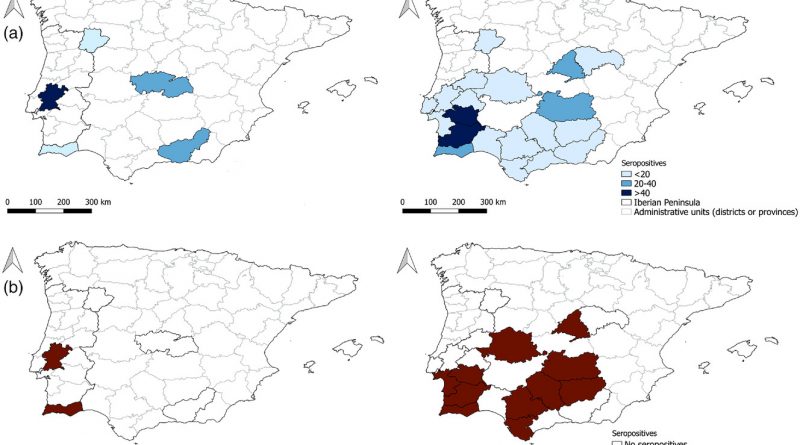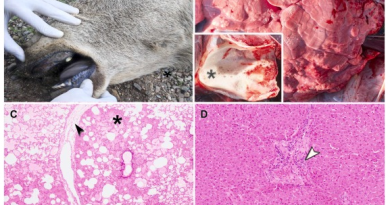Retrospective serological and molecular survey of myxoma or antigenically related virus in the Iberian hare, Lepus granatensis
Transboundary and Emerging diseases
Abstract
The 2018 outbreak of myxomatosis in the Iberian hare (Lepus granatensis) has been hypothesized to originate from a species jump of the rabbit-associated myxoma virus (MYXV), after natural recombination with an unknown poxvirus. Iberian hares were long considered resistant to myxomatosis as no prior outbreaks were reported. To provide insights into the emergence of this recombinant virus (ha-MYXV), we investigated serum samples from 451 Iberian hares collected over two time periods almost two decades apart, 1994–1999 and 2017–2019 for the presence of antibodies and MYXV-DNA. First, we screened all serum samples using a rabbit commercial indirect ELISA (iELISA) and then tested a subset of these samples in parallel using indirect immunofluorescence test (IFT), competitive ELISA (cELISA) and qPCR targeting M000.5L/R gene conserved in MYXV and ha-MYXV. The cut-off of iELISA relative index 10 = 6.1 was selected from a semiparametric finite mixture analysis aiming to minimize the probability of false positive results. Overall, MYXV related-antibodies were detected in 57 hares (12.6%) including 38 apparently healthy hares (n = 10, sampled in 1994–1999, none MYXV-DNA positive, and n = 28 sampled in 2017–2019 of which four were also ha-MYXV-DNA positive) and 19 found-dead and ha-MYXV-DNA-positive sampled in 2018–2019. Interestingly, four seronegative hares sampled in 1997 were MYXV-DNA positive by qPCR, the result being confirmed by sequencing of three of them. For the Iberian hares hunted or live trapped (both apparently health), seroprevalence was significantly higher in 2017–2019 (13.0%, CI95% 9.2–18.2%) than in 1994–1999 (5.4%, CI95% 3.0–9.6%) (p = .009). Within the second period, seroprevalence was significantly higher in 2019 compared to 2017 (24.7 vs 1.7% considering all the sample, p = .007), and lower during the winter than the autumn (p < .001). While our molecular and serological results show that Iberian hares have been in contact with MYXV or an antigenically similar virus at least since 1996, they also show an increase in seroprevalence in 2018–2019. The remote contact with MYXV may have occurred with strains that circulated in rabbits, or with unnoticed strains already circulating in Iberian hare populations. This work strongly suggests the infection of Iberian hares with MYXV or an antigenically related virus, at least 20 years before the severe virus outbreaks were registered in 2018.




